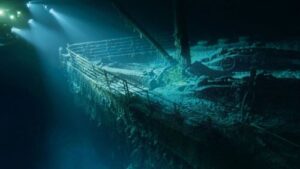The discovery of the Titanic wreck remains one of the most iconic achievements in the history of underwater exploration. However, what many people do not know is that this extraordinary discovery was largely made possible due to the dyslexia of the renowned oceanographer and underwater explorer, Robert Ballard. This fascinating story highlights how his unique dyslexia and 3D vision played a crucial role in this incredible adventure.
Dyslexia: A Challenge Turned into a Superpower!
Dyslexia is certainly a learning disorder that affects reading and writing, but it can also stimulate creativity and out-of-the-box thinking. For Robert Ballard, his dyslexia proved to be a valuable asset in his work in underwater exploration. His different way of thinking pushed him to develop an exceptional 3D vision, an ability to imagine three-dimensional environments from flat images.
Ballard’s 3D Vision: An Underwater Advantage
Ballard’s 3D vision allowed him to see the underwater world in a unique way. Unlike most people, he could visualize the ocean depths in three dimensions, which was crucial for his exploration work. He could mentally reconstruct the contours of the seabed, giving him a significant advantage in locating wrecks and points of interest (such as the German battleship Bismarck).
The Quest for the Titanic
The epic story of discovering the Titanic wreck in 1985 began long before that memorable year. Ballard, with his 3D vision, was approached by the U.S. Navy to lead a top-secret expedition to locate two lost nuclear submarines: USS Scorpion and USS Thresher. He accepted the mission on the condition that he could use the remaining time to search for the Titanic, a dream he had cherished for a long time.
The Historic Moment
Thanks to his 3D vision, Ballard meticulously scanned the ocean floor, eventually spotting the first remains of the Titanic. He recounts:
As he sat in a manned submersible during an expedition to the wreck, due to faulty navigation systems and poor sonar, Ballard’s pilot got lost and recommended discontinuing the descent to the seabed. However, thanks to his thorough study of maps and images of the site and what he describes as his ability to develop a detailed 3D mental model of the area, Professor Ballard was able to precisely locate their position and allow the exploration to continue until they discovered the wreckage site – exactly where he had said it would be.
This historic discovery was made possible by his unique way of perceiving the underwater environment. Ballard’s dyslexia, far from being a handicap, proved to be a superpower that turned his dream into reality.
This extraordinary story reminds us that our differences can become our greatest assets. Ballard’s 3D vision, resulting from his dyslexia, not only led to the discovery of the Titanic but also opened new perspectives in the field of underwater exploration.








